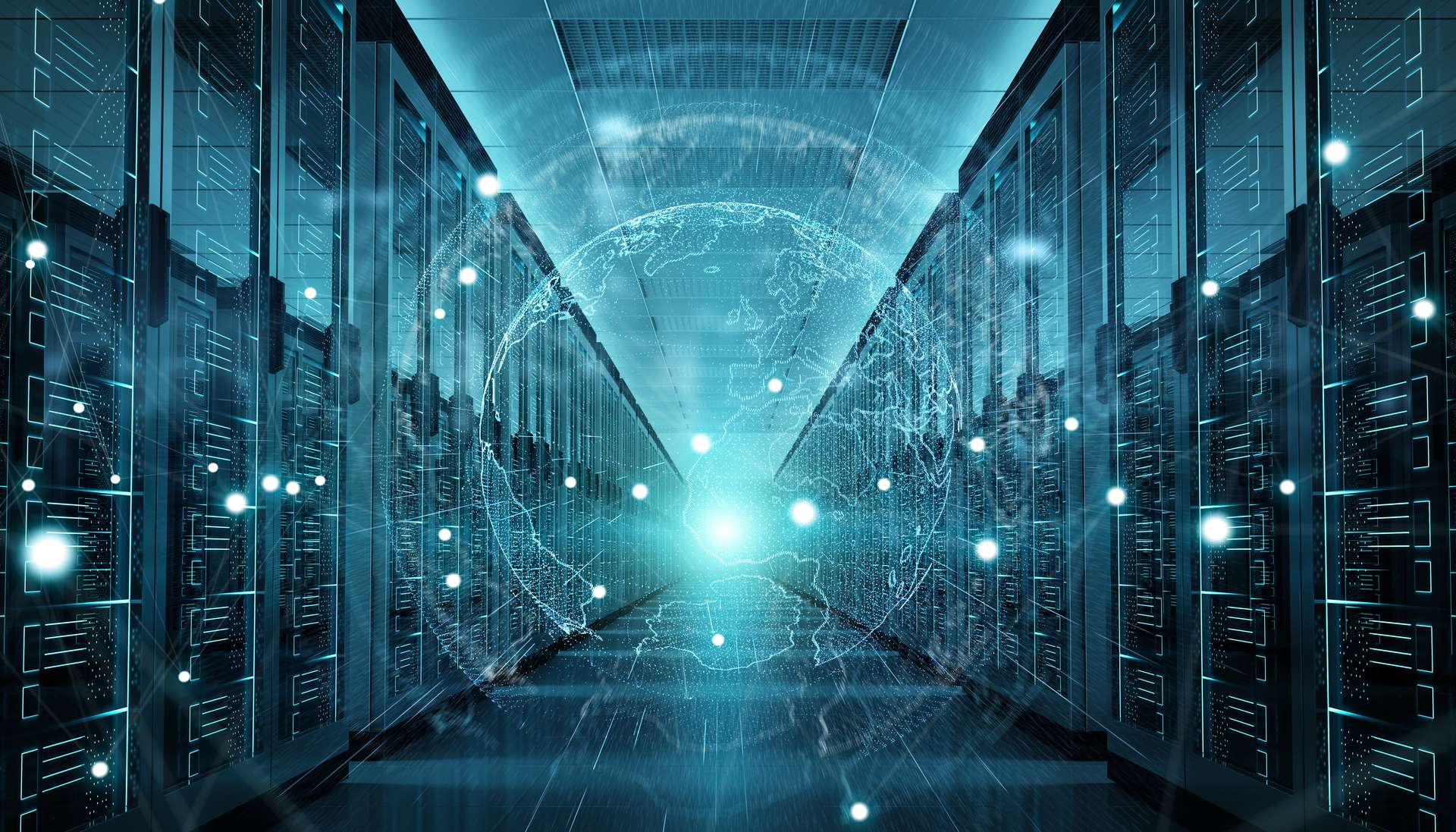
Whether written data center or datacenter, they both mean the same thing – an innovative IT infrastructure designed to store data.
Comprising a network, storage space and calculation servers, datacenters are used to process, organise, secure, and store computer data. A good datacenter needs to provide excellent security and suitable hosting space. It must also have a reliable and economical source of energy. Let’s take a deep dive into datacenters.
What is a data center?
Strictly speaking, a datacenter is a data storage space, which can be anything from a USB key to a dedicated server, a cabinet or rack with several computer servers connected to each other, a dedicated room housing several computer cabinets, a dedicated building, and so on.
Regardless of its size, the space will usually have a variety of types of equipment for storing, processing and communicating data to the outside world.
Today, we consider that there are 2 main types of datacenters:
- “On-prem” or “on-premises” datacenters: located on a company’s premises, these centres generally host only the company’s data;
- “Off-prem” or “off-premises” datacenters: located off-site in a multi-tenant building dedicated to data storage, these centres generally host data from several companies.
What does a data center do?
Although datacenters are often seen as little more than storage space, they are actually much more than that. A data center can offer many features and require different types of equipment.
A data center’s number one asset is space
A datacenter’s primary role is to provide accessible, solid, physical space that allow for the installation of computer cabinets containing servers. These cabinets are often very heavy and cumbersome, and require a vast network of connections. This means that the datacenter must have enough room and a configuration that allows for power cables and optical fibres to be easily routed to the cabinets, whether this is done through raised floors or suspended ceilings.
A datacenter provides a secure space
Although data piracy, cyber security and viruses make splashy headlines, they are not the main priority in terms of data security in a datacenter. Actually, the first thing that needs to be done to secure data is to protect against the physical theft of a server or hard drive, as well as against malicious acts (like cutting off the power, disconnecting equipment, etc.).
This is why data centers are often protected or even high-security sites. The protection systems that are used are subject to certification and use a number of ultra-secure technologies:
- CCTV systems (closed-circuit video surveillance);
- Badge access;
- Biometrics (authentication and identification by facial recognition, fingerprint or iris recognition);
- Thermal recognition.
Faced with the challenge of storing critical data, some even go so far as to conceal their identity, which is perfectly understandable.
A data center requires space and a lot of electricity
A datacenter needs a lot of electrical power. This is especially true for large data centers. Some computer racks can house over a dozen powerful servers and consume 20 kW or more.
Imagine the power needed to supply a computer room measuring several hundred square metres! The consumption is quickly calculated in megawatts, which is much more than a traditional home or office building. It is therefore essential for a datacentre to have access to a large amount of electricity.
A data center produces energy, which means it needs air conditioning
As we have seen, a data center uses a lot of energy, which inevitably turns into heat. To keep the room from reaching extreme temperatures that could impact the servers’ operations and overall condition, something has to be done to evacuate this heat.
Depending on the size of the datacenter, a good flow of air in the winter might be enough to keep it cool. But this is not the case for all datacenters, especially in warmer weather. Cooling systems must be installed. The capacity of the system must take into account the site’s configuration, the air treatment systems in place, the size of the data center and the climate.
What’s more, the expelled heat is responsible for greenhouse gas emissions. This means that the players in the sector need to consider the entire life cycle of the datacenter to better control and manage its environmental footprint.
A datacenter needs support
In some ways, a server is like a personal computer. Sometimes it needs to be switched on or off, connected to the network, updated, given more memory, etc.
In a datacentre that hosts the data of companies that are not located nearby, having people on site is essential. They can provide services for everyone, day and night, during the week and at weekends.
A datacenter requires good connectivity
The primary quality of a datacenter is its accessibility by the users of the websites and business applications (ERP, CRM, etc.) that it hosts. Connectivity is thus a key factor for data centers.
Data centers must be connected by operators to all the companies that use them, as well as to the Internet. This involves connections to terrestrial networks as well as undersea cables. These solutions allow datacenters to support everyday digital uses in an international context.
What makes a “first-class datacenter” from DATA4: key criteria
You may be wondering what makes a “great datacenter”, and how to choose from the many offers available. DATA4 has identified 4 essential criteria that guarantee a high quality, high-performance service.
- The size of the datacenter: ultimately, whether the datacenter is small or large is not a determining factor. Our experience has shown that many large customers prefer have their own building and would rather not share the premises with other companies.
- The security system: this factor is crucial. To provide the highest possible level of security, DATA4’s services use multiple security barriers and checkpoints with badges or biometric sensors. Our data centers are also under video surveillance.
- The energy source: DATA4 believes that a great data center must have an extremely reliable and completely redundant energy supply. This is why our main site is directly connected to RTE, the French electricity transmission system operator, without any intermediaries or other customers on the line.
- The cooling system: in addition to its efficiency, which is measured in PUE, the cooling system must also help to protect the environment. To do this, it must use as little energy and water as possible. Cooling systems that harness the power of the sea are being explored, but for the moment they face significant operational complications.
DATA4 is actively working to improve the overall carbon footprint of its data centers at every stage of their life cycle: from the design phase, through their construction and operational maintenance, to their dismantling.

